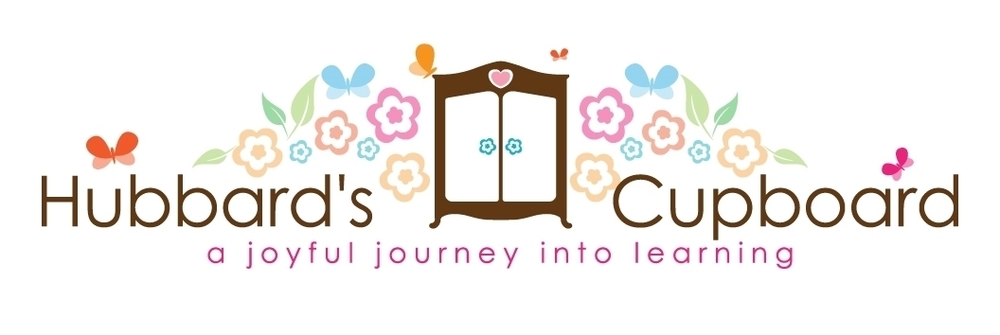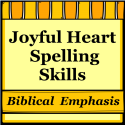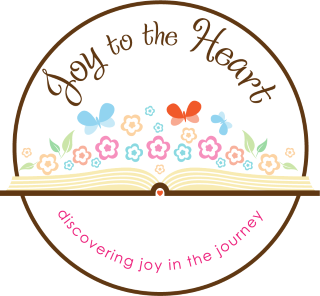We're Going On a Leaf Hunt
by Steve Metzger
Focus Story: We're Going on a Leaf Hunt by Steve Metzger
Companion Story: Have You Seen Trees? By Joanne Oppenheim
Companion Booklet: 'Fall Is'
Day 1
Prior Knowledge:
Bring in basket with fall type items (apple, pumpkin, leaves, acorn, light jacket or sweater, football, container of pumpkin pie spices to smell, squirrel stuffed animal, photo of flock of birds flying, a small scarecrow, trick or treat bag, etc.) Let students take out one item at a time and describe. How are all of these items related? Stress that all of these items are related to the season of fall or autumn. What else do they know about fall?
Companion Booklet:
Introduce the companion booklet, Fall Is. Read aloud the companion booklet for enjoyment. What is their favorite part of fall? Encourage students to look around them during the next few weeks as signs of fall start to become more obvious.
Focus Story:
Introduce the author and show the cover for We're Going on a Leaf Hunt. What do they see on the cover? What season is it? How can they tell? Where are the kids going? Read the title. Have they ever hunted for leaves or gone on a hike? Take a picture walk, continuing to ask questions and introducing what the kids repeat excitedly at the beginning of the story and after finding each new leaf. ("We're going on a leaf hunt. We're going right away. Let's find colorful leaves. It's a wonderful day.") What are the kids carrying on their backs? What might your students pack for a hike/leaf hunt? Why? What might they do with the leaves they collect? Have they ever seen leaves like this? As you come to the different settings/obstacles, also ask children how they might get to the other side. Stop at the page showing the children holding up their red oak leaves. Tell students that as the children went on their leaf hunt, they ran into something unexpected in the woods and startles them. Ask students to make predictions about what the children might have seen. Read aloud for enjoyment and to discover the last thing that the children find.
Day 2
Companion Booklet:
Reread the companion booklet, Fall Is, encouraging children to echo read. Have they noticed any changes or signs of fall yet? Reread again, having students listening caerfully for the many rhyming words (abound/found/around/round/ground, red/bed, mouth/south, down/brown, sun/run, treat/eat). Begin a predictable chart in which students complete the phrase "Fall is….", using one or two words.
Focus Story:
Reread We're Going on a Leaf Hunt, letting students chime in on the repetitive phrases in the story. Where did the children go while on their leave hunt? What settings were they in? Display simple pictures as the students mention each setting or refer to the pictures in the book (mountain, forest, waterfall, lake, home). Repeat the name of each setting, one at a time, having them listen for the number of syllables heard in each. Ask students to hold the corresponding number of fingers up for each syllable heard. Also discuss what words the author used to describe the settings (tall, dark, swooshing, cold, black and white).
Companion Story:
Remind students that the children who went on a leaf hunt saw lots of different trees. Introduce the title, author, and illustrator of the story Have You Seen Trees?. Show the cover. With the children, create a KWL of trees. What have they seen and noticed about real trees? (K) What would they like to learn about trees? (W) Read the story and see if they can add any new information to the chart. (L) Some of the following may be new to the children after having read the story….
Trees change through the seasons…
-Fall trees – nuts, colorful leaves, falling leaves, dry leaves, crunching leaves
-Winter trees – snow covered, ice covered, bare leaves
-Spring trees – budding, blooming, dropping seeds, birds nest, green leaves
-Summer trees – full leaves
Texture and color of bark….wrinkled, rough, twisted, cracked, white, smooth, slick
Types of trees… Pine tress, berry trees, fruit trees
In the coming days, make sure to choose and read factual books that address the students' questions about trees such as Fall Leaves Change Colors by Kathleen Weidner Zoehfeld, Autumn Leaves by Ken Robbins, The Tree by Gallimard Jeunesse, and Why Do Leaves Change Color? by Betsy Maestro. Fill in the L section as students make new discoveries about trees!
Day 3
Focus Story:
Reread We're Going on a Leave Hunt, letting students chime in on repetitive portions of the story. Look back at the pictures where the children hold up the leaves they have found. Discuss the different tree types mentioned– maple, birch, hickory, and red oak. Have students match a real leaf to a cut out as they come across it in the story. How are the leaves similar? How are they different? Stress that each type of tree has its own distinctive leaves. They vary in size, shape, color, etc. If time allows, go on a real hike/ leaf hunt and collect leaves! Also draw students' attention to any signs of fall. (During math today, you may wish to have students sort their leaves by color, shape, and/or size, make leaf rubbings, match leaves they found to outlines of labeled leaves, etc.)
Companion Booklet:
Reread the companion booklet, Fall Is, pausing to allow children to fill in the missing rhyming word. Reread again, stopping after each page to allow students to mask sight words such as is, a, and, to, see, on, my, with, in, the, etc. Continue having students add to the 'Fall Is' predictable chart.
Companion Story:
Reread Have You Seen Trees? Have students listen for certain sounds on particular pages. For example, students can listen for words with long i (high, wide, sky, hide behind); long o (slow, grow, low); long i (sight, bright); long o (old, cold, ago, holes); long i (bright, white, ice, night, light) on respective pages.
Day 4
Companion Booklet:
Reread Fall Is. Do a text match activity. Make two sentence strips of a couple of the sentences from the booklet. Cut apart one of each sentence so that there are individual words. Have students rearrange the cut words and match them below the sentence. Complete the 'Fall Is' predictable chart.
Companion Story:
Reread Have You Seen Trees?. Reread certain sections, asking students to identify any rhyming words that they hear (sky/high; slow/grow/low; sight/bright; cold/old, holes/bole, bright/white/night/light, dropping/popping, cherry/berry, million/billion/zillion).
Focus Story:
Play a 'Where are the Leaves?' game in which you hide a leaf/leaves near certain fall objects. Have the students describe where the leaf/leaves are located. For example, the leaf may be found under the rake, behind the pumpkin, in the basket, on the acorn, several around the apple, etc. Reread We're Going on a Leaf Hunt. When rereading, stress the spatial positions as well as the sounds the author conveyed – huff puff, squish squash, splish splash, plip plop. How might these sound real when we read them? What movement could we use to accompany each sound?
Day 5
Companion Booklet:
Reread the companion booklet, Fall Is. Reread the students' 'Fall Is' predictable chart sentences. Give each student their own sentence as well as one that is cut apart into words. Have them glue both to a sheet of paper, rearranging the words of the second and matching it to the full sentence that is above it. Let each child draw a picture to accompany his/her sentence. Save and bind in a 'Fall Is' class book to read with the class and to place in the reading corner.
Focus Story:
Review the various settings in the story. Have students place simply made pictures of each setting in order, according to the story. Next, have students act out the story! Scatter cut outs of each of the leaves mentioned in the story along the floor and tables. Have students line up behind you or an aide as the class prepares to act out the 'leaf hunt'. Encourage them to use motions and appropriate sounds as they act it out. When they come to the point of finding a new leaf, have them find and pick up the correct leaf cut out.
Companion Story:
Reread Have You Seen Trees. Review the KWL chart regarding trees. What have they learned?
Related Read Aloud Stories/Poems:
Focus Story: We're Going on a Leaf Hunt by Steve Metzger
Companion Story: Have You Seen Trees? By Joanne Oppenheim
Companion Booklet: 'Fall Is'
Autumn Leaves by Ken Robbins
Autumn Leaves Are Falling by Maria Fleming
Fall Leaves Change Colors by Kathleen Weidner Zoehfeld
How Do You Know It's Fall? By Allan Fowler
Why Do Leaves Change Color? By Betsy Maestro
When Autumn Comes by Robert Maass
Fall Leaves Fall by Zoe Hall
Fall Leaves by Mary Packard
Autumn Leaves by Gail Saunders Smith
Animals in Fall by Gail Saunders Smith
I Am A Leaf by Jean Marzollo
When Autumn Falls by Kelli Nidey
Fall Is Not Easy by Marty Kelley
Autumn Days by Ann Schweninger
Fall Changes by Ellen Senisi
Autumn : An Alphabet Acrostic by Leslie Evans
Time to Sleep by Denise Fleming
The Tree by Gallimard Jeunesse
'Leaves' by Jean Warren
Possible Cross Curricular Connections:
Math:
- Fall Leaves Pocket Chart
Printable Pictures for 'Fall Leaves'
2. Color Leaf Graphing
3. Leaf Booklet
4. Leaf Patterning
5. Create or fill in pattern block leaves
Art:
- Fall Leaf Windsock
- Crayon Melt Wax Paper Leaves
- Fall Leaves Wreath
- Leaf Rubbings
- Wax Paper Paint Mixing Fall Tree (a non messy craft idea shared by K teacher Judy Reed)
6. Press a favorite leaf from the leaf hunt
Literacy:
1. Sight Word Leaf Match – Match two word cards. Then write the word on a lined leaf.
Sight Word Leaves
Sight Word Leaf Recording Sheet
2. Sound Trees - The teacher says a word and the students listen and count the number of phonemes in the word, placing the corresponding number of leaves on the tree.
3. Word Family Trees
Science:
- Leaf Matching – Match real leaves to a photo of a leaf with the name underneath.
- Go on a leaf hunt looking for certain colors or types of leaves. (Collect nature items on the walk as well.)
- Visit a nature center.
Related Internet Resources:
Fall Into Fall - from Teaching is a Work of the Heart
Fall is in the Air - ideas at the Virtual Vine
Fall Unit - from the K Crew

















